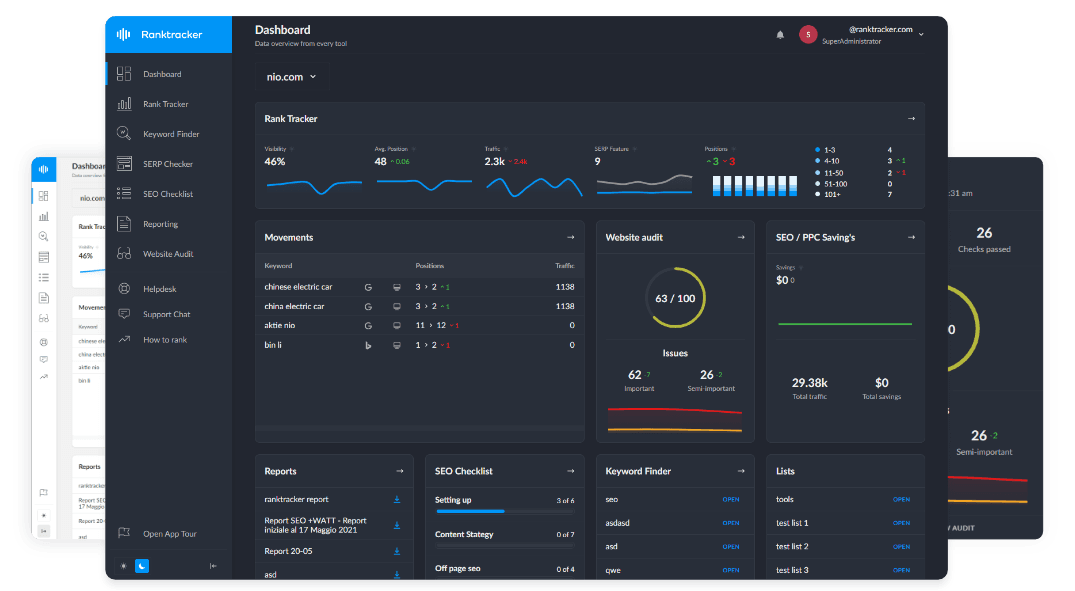Intro
In the rapidly evolving landscape of software development and IT operations, organizations are increasingly turning to managed DevOps services to streamline their processes, enhance collaboration, and accelerate delivery pipelines. I've spent the last seven years helping companies implement DevOps transformations, and I can tell you firsthand—it's never as straightforward as the glossy brochures make it seem. While managed DevOps offers tremendous benefits, from cost savings to faster deployment cycles, organizations frequently encounter significant hurdles during implementation and ongoing operations. This comprehensive guide draws from my real-world experiences to help you navigate the common challenges in managed DevOps and implement practical solutions that actually work in production environments.
The Reality Gap in Managed DevOps Expectations
One of the biggest issues I encounter when consulting with clients is the expectation vs. reality gap. Many organizations jump into managed DevOps with unrealistic timelines and expectations.
Last year, I worked with a mid-sized fintech company that expected to completely transform their release cycle from monthly to daily deployments within just six weeks of engaging a managed DevOps provider. The reality? It took nearly six months to achieve that goal. Why? Because they underestimated several critical factors:
-
Legacy System Complexity: Their core banking platform had 15+ years of technical debt and virtually no automation.
-
Team Skill Gaps: Their developers had minimal experience with containerization, infrastructure-as-code, or CI/CD practices.
-
Organizational Resistance: Middle management was quietly resistant to changing established processes.
Realistic Expectation Setting
To avoid similar disappointments, I now advise clients to:
-
Conduct a thorough assessment: Before signing with any managed DevOps provider, perform a detailed analysis of your current state, including technical debt, skill gaps, and organizational readiness.
-
Create a phased implementation plan: Break the transition into 30, 60, and 90-day milestones with clear, measurable objectives.
-
Budget for the learning curve: Expect 20-30% reduced productivity during the initial transition as teams adapt to new tools and processes.
A healthcare client of mine took this phased approach and achieved a much smoother transition. We started with a simple CI pipeline for a non-critical internal application, then gradually expanded to more complex systems as the team built confidence and competence.
Cultural Resistance: The Silent DevOps Killer
In my experience, the technical challenges of managed DevOps are rarely the most difficult to solve. The real obstacles are usually human and organizational.
A manufacturing client brought me in after their managed DevOps initiative had stalled for months. On paper, everything looked right—they had all the tools, a reputable service provider, and executive support. The problem? Deep-seated cultural resistance between their development and operations teams.
The developers viewed the new CI/CD pipelines as "restricting their creativity," while operations saw automated deployments as "risky shortcuts" that would create problems they'd have to fix. Neither group had been properly included in the decision-making process.
Building a DevOps Culture That Sticks
Here's what actually worked to overcome this resistance:
-
Create joint ownership: We formed cross-functional teams with shared responsibilities and KPIs that linked development and operational success.
-
Demonstrate early wins: We identified quick wins that benefited both groups—developers got faster feedback on their code, while operations saw fewer midnight emergency calls.
-
Provide hands-on training: Rather than theoretical training, we used real production issues as learning opportunities for collaborative problem-solving.
-
Celebrate success publicly: We created a "deployment win" dashboard that tracked successful deployments, reduced incidents, and time saved.
Six months later, the same teams that had been undermining the DevOps transition were its biggest advocates. The key lesson? Technical implementations without cultural alignment will always struggle.
Security Integration Challenges in Fast-Moving Pipelines
Security remains one of the most problematic areas in managed DevOps implementations. I can't count how many times I've seen organizations adopt rapid delivery cycles only to create new security vulnerabilities.
A retail client I worked with last year increased their deployment frequency from monthly to weekly using managed DevOps but inadvertently introduced three critical security vulnerabilities into production because their security processes couldn't keep pace with the accelerated development cycle.
Practical DevSecOps Integration
Based on several successful security integrations I've implemented, here's what works:
-
Shift security left: Integrate automated security scanning at every stage of the pipeline, starting with IDE plugins that alert developers to issues before they even commit code.
-
Automate compliance verification: For regulated industries, implement automated compliance checks that validate configurations against required standards before allowing deployment.
-
Implement security as code: Treat security configurations and policies as code that lives alongside application code, following the same review and testing processes.
-
Create security champions: Designate and train team members who act as security advocates within their teams, bringing security awareness into daily development activities.
After implementing these practices, my retail client was able to maintain their weekly deployment cycle while actually improving their security posture. Their security team shifted from being seen as blockers to enablers of safe, rapid delivery.
Technical Debt: The DevOps Implementation Roadblock
Nearly every organization I've consulted with has underestimated how their existing technical debt would impact their DevOps transformation. Legacy systems, manual processes, and poor documentation can significantly slow down managed DevOps implementation.
A financial services company I worked with struggled for months to integrate their legacy mainframe systems into their new CI/CD pipelines. The systems lacked proper API interfaces, had minimal automated testing, and relied on tribal knowledge from a few senior engineers nearing retirement.
Tackling Technical Debt Strategically
Rather than taking an all-or-nothing approach, here's the strategy we implemented:
-
Map your estate: Catalog all applications and infrastructure components, assessing each for DevOps readiness using a simple red/amber/green system.
-
Create integration boundaries: For legacy systems that can't easily be modernized, create clean interfaces and API layers that allow newer systems to interact with them.
-
Prioritize strategically: Focus initial DevOps efforts on high-business-value, lower-complexity systems where you can demonstrate success quickly.
-
Allocate debt reduction time: Dedicate 20% of sprint capacity specifically to technical debt reduction, focusing on the highest-impact items first.
Using this approach, the financial services company successfully brought 60% of their application portfolio into modern DevOps practices within a year, while creating a sustainable plan for the remaining legacy systems.
Tool Sprawl and Integration Complexity
Another common challenge I've observed is the proliferation of DevOps tools that don't work well together. One telecommunications client had accumulated 14 different tools across their CI/CD pipeline, monitoring, security scanning, and infrastructure management—most of which required manual handoffs between systems.
Taming the DevOps Toolchain
Based on successful toolchain consolidations I've led, here's what works:
-
Prioritize integration capabilities: When selecting tools, prioritize those with robust APIs and pre-built integrations with your existing toolset.
-
Implement a platform approach: Consider DevOps platforms that provide multiple capabilities in an integrated package rather than assembling best-of-breed point solutions.
-
Automate toolchain testing: Create automated tests for your DevOps toolchain itself to ensure integrations continue working as tools are updated.
-
Document workflows end-to-end: Create clear visual documentation showing how work flows through the entire toolchain, identifying manual handoffs that could be automated.
After consolidating their toolchain to five well-integrated tools, my telecommunications client reduced their deployment lead time by 70% and eliminated numerous error-prone manual steps between systems.
Scaling Challenges in Enterprise Environments
Scaling DevOps practices beyond initial pilot teams presents unique challenges that many organizations underestimate. A healthcare enterprise I worked with successfully implemented DevOps practices in one application team, only to see their model break down when they attempted to scale to 20+ teams.
Scaling DevOps Successfully
Here's the approach that ultimately worked:
-
Create an internal DevOps platform team: Establish a dedicated team focused on building reusable pipelines, infrastructure templates, and automation that other teams can leverage.
-
Implement innersource practices: Encourage teams to share automation code, configurations, and best practices through internal repositories with clear contribution guidelines.
-
Standardize wisely: Identify which aspects of the DevOps process should be standardized across teams (security requirements, deployment approvals) versus where teams should have flexibility (choice of testing frameworks, internal workflows).
-
Build a community of practice: Establish regular forums where DevOps practitioners across teams can share successes, lessons learned, and collaborate on common challenges.
After implementing these practices, the healthcare organization successfully scaled their DevOps practices to all 24 application teams within 18 months, while maintaining consistent quality and security standards.
Cost Management and Optimization
While managed DevOps often promises cost savings, I've found that many organizations actually see increased costs initially without proper governance and optimization practices. A retail client of mine saw their cloud infrastructure costs double in the three months following their DevOps implementation as developers gained the ability to self-provision resources.
Controlling Costs Without Restricting Innovation
Here's what has worked with my clients:
-
Implement tagging and showback: Require all infrastructure to be tagged with team, application, and environment to track costs and make teams aware of their spending.
-
Set up automated cost governance: Create automated policies that detect and alert on cost anomalies or enforce shutdowns of non-production resources during off-hours.
-
Build cost optimization into the pipeline: Integrate infrastructure cost analysis tools directly into CI/CD pipelines to identify inefficient configurations before deployment.
-
Create cost champions: Similar to security champions, designate team members responsible for cost awareness and optimization within their teams.
After implementing these practices, my retail client reduced their cloud spending by 40% while continuing to increase their deployment frequency and application performance.
Conclusion: Making Managed DevOps Work In Real Organizations
Based on my years helping organizations implement and optimize managed DevOps, I've found that success requires equal attention to technical, cultural, and process challenges. Organizations that approach managed DevOps as a purely technical implementation inevitably struggle, while those that address the human and organizational elements alongside the technical components achieve lasting success.
The All-in-One Platform for Effective SEO
Behind every successful business is a strong SEO campaign. But with countless optimization tools and techniques out there to choose from, it can be hard to know where to start. Well, fear no more, cause I've got just the thing to help. Presenting the Ranktracker all-in-one platform for effective SEO
We have finally opened registration to Ranktracker absolutely free!
Create a free accountOr Sign in using your credentials
The most successful managed DevOps implementations I've been part of share common characteristics:
-
Clear alignment between DevOps objectives and business goals
-
Executive sponsorship paired with grassroots enthusiasm
-
Realistic timelines that account for organizational learning curves
-
Balanced focus on people, process, and technology
-
Willingness to adapt based on feedback and measured outcomes
By anticipating and proactively addressing the challenges outlined in this guide, organizations can significantly increase their chances of realizing the full benefits of managed DevOps: faster delivery, improved quality, enhanced security, and ultimately, better business outcomes.

